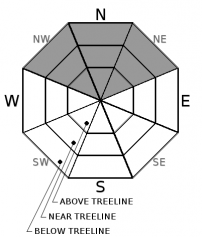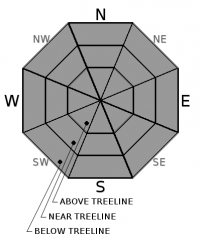| Thursday | Thursday Night | Friday | |
|---|---|---|---|
| Weather: | Mostly cloudy with a chance of rain showers in the morning. Then scattered showers in the afternoon. Snow level 8500 ft. | Mostly cloudy with scattered rain showers. Snow level 8000 ft. | Mostly cloudy with scattered rain showers. Snow level 8000 ft. |
| Temperatures: | 42 to 48 deg. F. | 32 to 37 deg. F. | 42 to 47 deg. F. |
| Mid Slope Winds: | South | South | South |
| Wind Speed: | 10 to 15 mph with gusts to 25 mph | 10 to 15 mph with gusts to 30 mph increasing to 40 mph after midnight | 15 to 25 mph with gusts to 40 mph |
| Expected snowfall: | Rain up to .1 | Rain up to .1 | Rain up to .1 |
| Thursday | Thursday Night | Friday | |
|---|---|---|---|
| Weather: | Mostly cloudy with a chance of rain and snow in the morning. Isolated showers in the afternoon. Snow level 8500 ft. | Mostly cloudy with isolated snow showers. Snow level 8000 ft. | Mostly cloudy with scattered snow showers. Snow level 8000 ft. |
| Temperatures: | 36 to 42 deg. F. | 30 to 36 deg. F. | 38 to 44 deg. F. |
| Ridge Top Winds: | South | South | South |
| Wind Speed: | 25 to 35 mph with gusts to 60 mph decreasing to 40 mph in the afternoon | 20 to 30 mph with gusts to 55 mph increasing to 30 to 35 mph with gusts to 65 mph after midnight | 30 to 45 mph with gusts to 70 mph |
| Expected snowfall: | up to 2 | Trace to 0 | Trace to 0 |


























